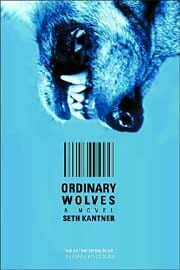“It felt strong and good to be near mountains without names,” concludes Cutuk Hawcly, briefly returning to the trackless rural Alaska of his boyhood. Readers who sympathize will probably enjoy every minute of Seth Kantner’s lumbering but impressive debut novel. Kantner writes as one who feels rural Alaska; his wintry metaphors seem exactly the type to which a sensitive young man growing up in an igloo with his artist father and two siblings would resort.
Despite its uncommon setting, Ordinary Wolves plays out as a fairly typical American coming-of-age novel with an equally typical strain of frontier Luddism. By the second section, Cutuk, grown up and living in the city, vacillates between the native Inupiaq culture that has influenced but never accepted him, and a white urbanity that both attracts and repels. His Hamlet-style dithering grows tiresome, but you can’t help rooting for a hero capable of sharp insights into consumerist civilization—“Seems like people design great chairs then … I don’t know. Pay bills in them? … When I think of humans as one big herd? I see winter coming, and them scurrying and thinking about sex or losing their keys.” Or, more pithily, “White people—everything talked to pieces until all the pieces had numbers.”
For all its bleakness, both in portraying the city and an Inupiaq culture caving in from slow suicide, the novel is humane in its portrayal of the relationships that provide Cutuk an anchor—with his sister, with trader Melt Wolfglove and the man’s daughter, Dawna, whom he loves, and with his stubbornly independent father. His story ends the only way a novel about split identity honestly can—with nothing decided, everything in midair.
